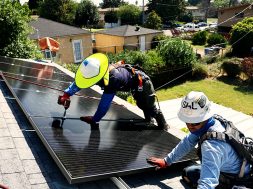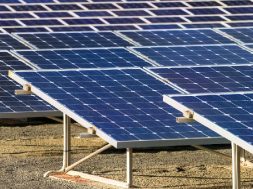
2 heritage structures in Mumbai switch to solar power, reduce carbon footprint
Located at Masjid Bunder, 204-year-old Zakaria Masjid and 150-year-old Hashemiah High School, Mumbai’s first Urdu medium school, have set an example for other heritage structures. Both have started harvesting solar energy.
According to members of the Zakaria Masjid trust and the school, the monthly electricity bill fell by 20% after they installed the solar power system. “Apart from being cost-effective, we are able to spread the message of protecting the environment by adopting this renewable form energy,” said Irshad Lakdawala, chairperson, Zakaria Masjid trust.
Prior to the installation, the monthly electricity bill for the masjid was Rs 15,400, which has now dropped Rs12,833. Members said, the mosque will now save Rs1,54,000 every year. Similarly, the monthly bill for the school has come down from Rs10,208 to Rs 7,290. The cost of installation for the entire project was Rs10 lakh and the trust is expected to recover it by 2019.
A 15 kilowatt power (kwp) — 10kwp for the masjid and 5kwp for the school — solar power plant with 48 panels — 36 at the mosque and 12 atop the school — were installed by the trust that oversees both the bodies in May. The electricity generated by the power plant is used to power lights and fans the common areas, air conditioners and even lifts.
Both the structures are built on a plot measuring half-an-acre. While 200 devotees offer namaz at the mosque daily, which increases by fivefold during Ramzan, the schools has 550 students from Class 1 to 10.
Solar energy is a free source of renewable energy that does not cause pollution. Instead, it reduces carbon emissions that are emitted from burning coal, gas and oil for electricity generation. It can be used in remote areas where electricity from the grid cannot be accessed.
“We installed eight air conditioners on the mosque premises and all are powered using the solar power plant.” said Abdul Qayyum Rajani, another trustee. “Devotees as well as students were fascinated by the technology and we have urged them do the same at their homes as well.”
While the solar power system at the mosque generates an average of 45-50 kilo-watt hour (kWh) daily, 25 kWh is generated daily at the school. The salient feature of the solar panels installed on an elevated frame is that they not only generate electricity but also provide shade to the devotees.
“It is exemplary that two heritage structures in the city have led by an example and adopted solar energy. Temples, mosques and residential societies need to make most of the abundant energy emitted from the sun and reduce their individual carbon footprint,” said Muhammad Sohail Shaikh, chief operating officer, Green Power Projects Pvt Ltd,which installed the project.
The renewable energy source will not only benefit the mosque and school but areas that face electricity woes. A net-metering system has been installed on the premises which allows surplus power generated to be diverted to the grid and import in case of a shortage. At the end of a financial year, the society will be charged by the power supplier only for the ‘net usage’.















